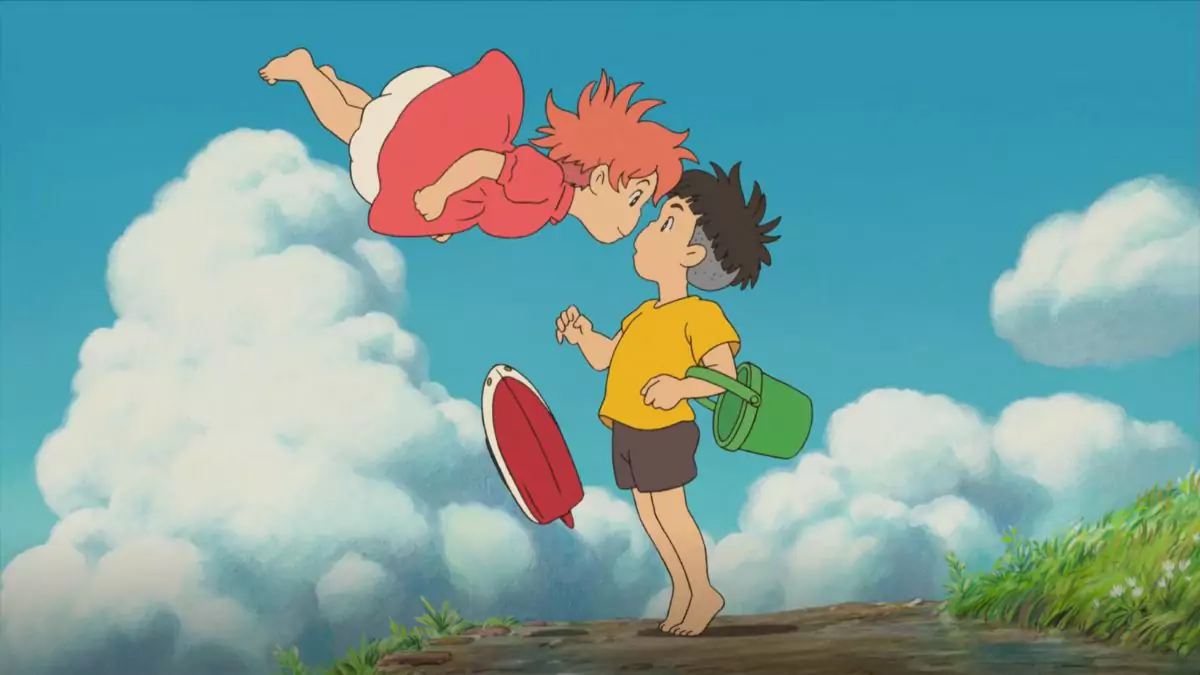The Power of Ponyo’s Magic – A Story for All Ages
I’ll admit it—when I first saw Ponyo, I thought it was just another kids’ movie. Charming, whimsical, and maybe a bit nonsensical. But then something struck me: this wasn’t just a film about a fish who turns into a girl. It was a story about seeing magic in the ordinary and about how we, as adults, so often miss that magic in our everyday lives.
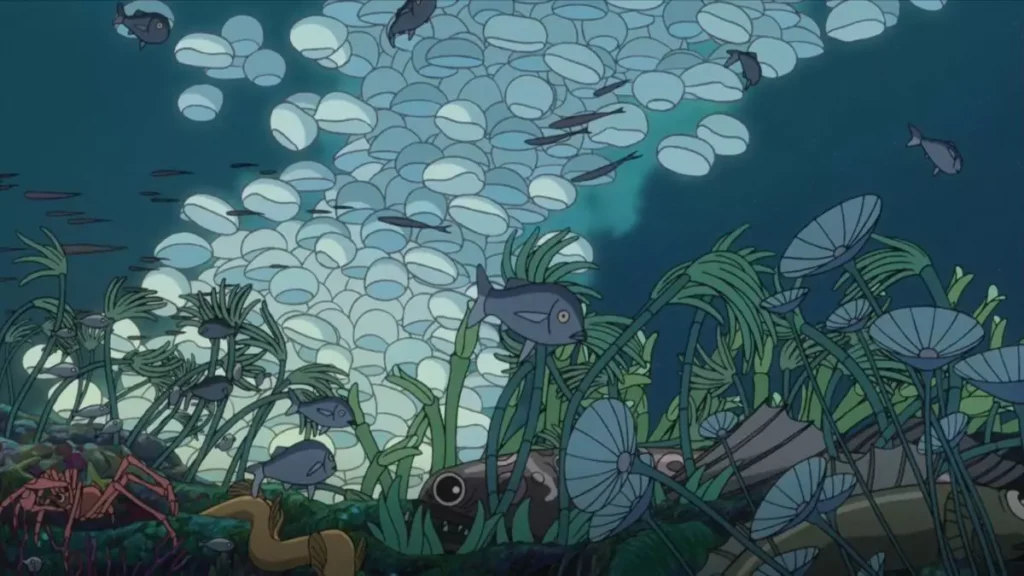
Studio Ghibli does something special here. Ponyo isn’t only a children’s movie; it’s a mirror, showing us a world as wondrous as flawed. In Ponyo, fantasy and reality coexist seamlessly, with no sharp edges between them. It reminds us that magic doesn’t have to mean grand wizards or ancient prophecies. Sometimes, magic is just a fish swimming beside a boat or a little girl seeing her world through unclouded eyes.
So why does this matter? Why should we, as adults, pay attention to this? Because Ponyo teaches us that the world is more than just data points and responsibilities. It’s made up of tiny wonders—the kind of things that kids notice and we too often overlook.
- The simplicity of Ponyo: The story doesn’t rely on complex narratives or intense drama. Instead, it’s about small moments—a girl’s friendship with a fish, the way waves crash, the feel of a storm. Ponyo gives weight to these “small” things, showing us that they matter.
- Studio Ghibli’s unique touch: Unlike Hollywood, Ghibli isn’t interested in separating “real” and “imaginary.” In Ponyo, magic doesn’t “happen” to the world; it’s already part of it. A sea filled with magical creatures exists alongside a small coastal town—neither is less “real” than the other.
- Why it resonates with us: As adults, we sometimes feel disconnected from our surroundings, caught up in routines and deadlines. Ponyo offers a gentle reminder to reconnect with the world and notice the beauty in a raindrop or a passing wave.
Watching Ponyo, I’m reminded of the value of curiosity and noticing the extraordinary in the ordinary. And isn’t that something we all need? Ponyo speaks to our universal longing to see the world not as a set of tasks to complete but as a place to explore and marvel at. In a world so often obsessed with “growing up,” Ponyo permits us to see things with wonder again, to let our guard down, and remember what it feels like to believe in magic.
What is Magical Realism? Why Ponyo Nails It
Magical realism. It’s one of those terms that sounds simple but unpacks a lot more than you might expect. It started in art, then moved into literature, and eventually, into film. At its core, magical realism is about grounding magic in the real world—not in some distant, hidden realm, but right here, where we live. It’s magic that doesn’t demand a “big reveal” or explanation because it belongs; it fits in seamlessly.
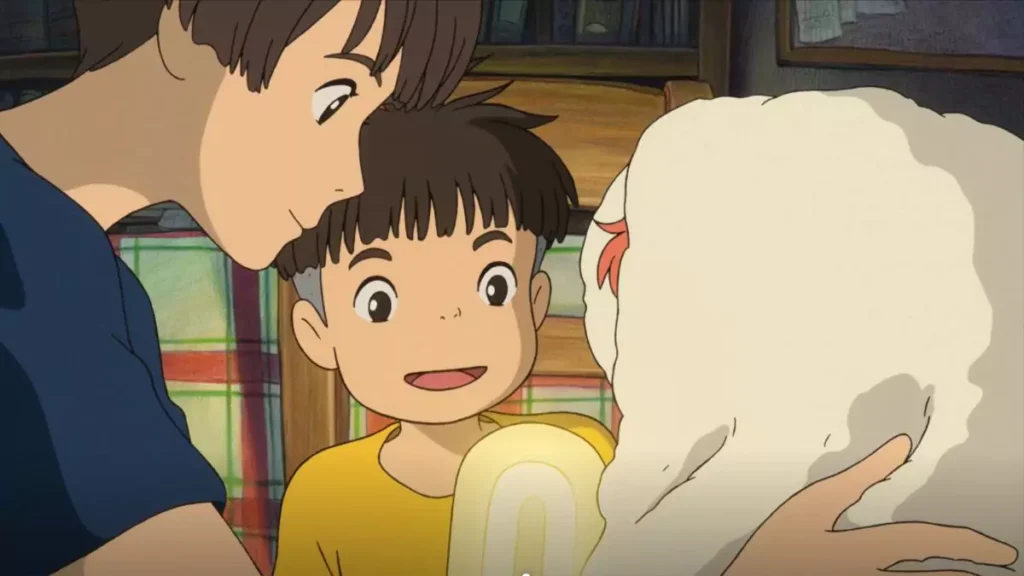
The Origins of Magical Realism
Magical realism began in the early 20th century, largely as a response to the extremes of surrealism and abstraction. Artists and writers wanted to capture the mysterious qualities of the everyday world. Think about Latin American literature—authors like Gabriel García Márquez, who treated the magical as matter-of-fact. They didn’t pull you out of reality to show you something fantastic. Instead, they pointed at the world around you and said, “Look closely. Isn’t it already kind of magical?”
It’s not about grand, mythical worlds or escapist fantasies. Magical realism lets us see reality through a different lens, inviting us to acknowledge the absurd, the poetic, and the wonder right under our noses.
Ponyo’s Take on Magical Realism
Now, here’s where Ponyo shines. It doesn’t separate magic from reality because they’re the same thing in the world of Ponyo. The magical creatures under the sea, the waves that have a mind of their own, and Ponyo herself—all these elements exist within a world that’s utterly recognizable. There’s no hidden portal, no secret spell. Magic is simply part of life.
In Ponyo, the ocean is alive. It breathes and moves, holding a visible but not outlandish magic. When Ponyo transforms into a little girl, no one questions it as impossible. They accept it as part of the world’s natural wonder as if to say, “Of course, this is what happens in life.” Ghibli uses magical realism not to dazzle us with fantasy, but to deepen our appreciation of the world we already know.
Why This Matters
Ponyo isn’t trying to transport us to another world; it’s encouraging us to see our own world differently. By weaving magic into reality, Ponyo teaches us that maybe, just maybe, we’re surrounded by wonders we’ve stopped noticing.
- For adults: This is a wake-up call to slow down and pay attention. Magical realism, especially in Ponyo, reminds us that the boundaries we draw between “possible” and “impossible” are often arbitrary.
- For kids: They might see magic all around them naturally, but Ponyo reinforces that belief, nurturing a mindset that doesn’t restrict possibility.
Ultimately, Ponyo invites us to ask ourselves: What if we stopped looking for magic “out there” and started seeing it here? It’s not about escaping reality—it’s about embracing it, flaws and all.

The Sea as Magic and Mystery – An Environmental Parable
When we think of the ocean in Ponyo, we can’t help but see it as both a magical world and a warning. It’s full of vibrant, mystical creatures and currents that seem alive, almost sentient. Yet, at the same time, it’s polluted and imbalanced, suffering from the effects of human interference. Ponyo doesn’t just tell us a story; it shows us our own world, wrapped in wonder and weighed down by neglect.
Our Ocean, Our Responsibility
Ponyo gives us a stunning and surreal ocean filled with magical fish and mysterious sea gods. But here’s the catch—the ocean is also choked with trash, a mess we created. It’s a subtle reminder of our responsibility. The ocean’s imbalance in the movie isn’t an accident or a metaphor; it’s a reality we face. As viewers, we’re left with a question: if the ocean can be both a source of beauty and power, why do we treat it like a dumping ground? Studio Ghibli’s message here is clear without being preachy. They show us what’s possible if we honor the ocean—and what happens if we don’t.
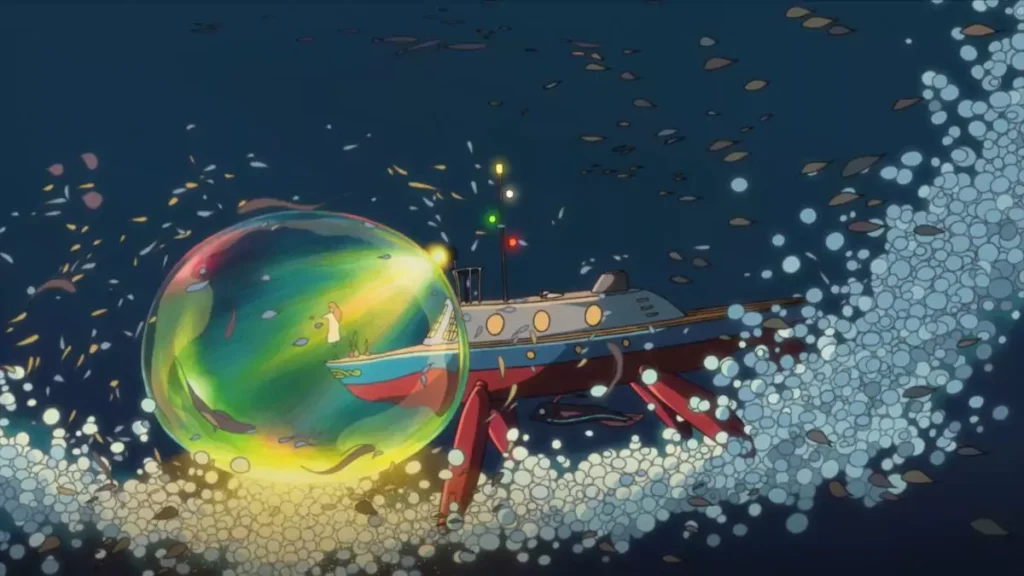
Animism in Action
One of the reasons Ponyo feels so uniquely magical is its foundation in Japanese Shinto beliefs, especially animism. In Shinto, every part of nature—rocks, rivers, trees, even the ocean—has a spirit. It’s alive in a way Western audiences might not be used to. This belief isn’t just window dressing; it shapes the entire world of Ponyo. The ocean isn’t just a backdrop; it’s a character. It’s alive, aware, and reactive. When humans disrupt it, it reacts with floods and storms. By bringing animism to life, Ponyo doesn’t just entertain; it immerses us in a worldview where the natural world deserves respect.
A Reminder, Not a Lecture
Here’s the genius of Ponyo: it’s not a lesson dressed up as a film. There’s no heavy-handed moralizing, no monologue about why pollution is wrong. Instead, it gently leads us to an understanding. The ocean’s beauty and balance feel precious; seeing it threatened feels personal. Ponyo makes us feel something rather than just think something. It invites us to fall in love with the ocean’s magic first. And once we’re invested, it lets us realize that protecting that magic is our job. This isn’t a scolding; it’s a reminder of what we could lose if we keep looking the other way.
Ponyo doesn’t give us neat solutions or lectures. It gives us a vision, a sense of wonder, and a hint of loss. It trusts us to put the pieces together—to understand that if we want to keep this world magical, we must take care of it. And that, I think, is what makes Ponyo more than a movie. It’s an invitation to look at our world with respect and awe, not because we should, but because we want to.
Characters as Mirrors – How Ponyo Shows Us Ourselves
In Ponyo, the characters are more than just people moving the plot along—they’re reflections of different aspects of ourselves. Each character brings a perspective on the world that feels deeply relatable, whether it’s the wonder of childhood, the conflicts of adulthood, or the calm acceptance of the unknown. Watching them, we see pieces of our own struggles and triumphs, hopes and fears. Ponyo becomes a mirror, showing us how we might look at our world and ourselves differently.

Sosuke and Ponyo’s Childlike Wonder
Sosuke and Ponyo see magic without questioning it. They don’t analyze or second-guess; they accept what’s before them with open hearts. To Sosuke, a fish turning into a girl isn’t strange—it’s a friend coming to life. To Ponyo, being human is just part of an adventure. Watching them, I wonder: what would happen if we, as adults, approached our world this way? If we stopped questioning every miracle and simply enjoyed it? Sosuke and Ponyo show us a way of living that’s joyful, fearless, and open to possibility. They remind us that there’s magic all around us if we want to see it.
Fujimoto’s Conflict
Then there’s Fujimoto, the conflicted sorcerer who both loves and resents the human world. He’s torn between his connection to the ocean and his frustrations with humanity’s carelessness. In Fujimoto, we see a struggle that many of us know well: the desire to protect something pure while feeling disillusioned with the way it’s treated. Fujimoto’s ambivalence mirrors our own love-hate relationship with progress, convenience, and the environment. We want a better world, but we’re frustrated by the compromises we make along the way. His character speaks to the tension we feel between protecting what matters and dealing with what’s real.
Lisa’s Grounded Acceptance of Magic
Finally, there’s Lisa, Sosuke’s mother, who is perhaps the most remarkable of all. She doesn’t marvel or question Ponyo’s magic; she accepts it with the same practicality that she brings to everything else. When Sosuke brings Ponyo home, Lisa simply adapts. Her grounded response to magic is Ghibli’s unique take on storytelling. In so many films, adults dismiss the magical, or they’re in awe of it. But Lisa represents something different: a grounded acceptance that magic can be real, and that life goes on. Her response to Ponyo’s abilities isn’t shock; it’s care. She feeds her, she welcomes her, and she moves forward.

Ponyo’s characters teach us more than plot ever could. They show us how to live with open eyes, grounded hearts, and minds that can hold contradictions. They reveal parts of ourselves—our curiosity, our conflicts, our ability to adapt. Through Sosuke, Ponyo, Fujimoto, and Lisa, we see the possibilities of wonder, resilience, and love. And perhaps most importantly, they remind us that whether we’re five or fifty, there’s always room for a little bit of magic in our lives.
Notable Quotes – Moments That Stay with Us
In Ponyo, words are simple, yet they carry weight. These quotes aren’t just lines in a script; they’re glimpses into the soul of the film. Each one speaks to a truth, a reminder, or a feeling that resonates long after the credits roll. Here are five moments that stay with us and why they matter.
Ponyo loves Sosuke!
– Ponyo
This line, shouted with all the enthusiasm a magical fish-turned-girl can muster, is more than a declaration. It’s the essence of unconditional love and connection. Ponyo’s love for Sosuke isn’t complicated by doubt or fear; it’s pure and unwavering. In a world where love often comes with conditions or skepticism, Ponyo’s simple, wholehearted statement is refreshing. She doesn’t need proof or assurances; she just loves. It’s a reminder for us, too. What if we could love with that same openness? Without hesitation, without second-guessing, just pure connection. It’s not just about romance—it’s about the way we connect with others, with the world, and with ourselves.
The sea is alive, Sosuke. It’s magic.
– Lisa
When Lisa says this, she’s not just explaining the world to Sosuke; she’s inviting him to see it differently. To Lisa, the ocean isn’t just water and waves; it’s a living, breathing entity filled with wonder. This line speaks to a truth many of us have forgotten—that nature holds mysteries beyond our understanding. Lisa’s words are a nudge, urging us to look at the world with fresh eyes. The sea isn’t just a body of water; it’s a force, a presence. This simple line reminds us that the world we live in is far richer than we often acknowledge, that magic exists if we’re willing to see it.
The ocean is out of balance.
– Fujimoto
Fujimoto’s line is straightforward, but it’s packed with meaning. The ocean, a source of life and magic in Ponyo, is suffering. Human interference has disrupted its natural balance, and Fujimoto, deeply connected to the sea, feels the weight of that imbalance. This line is Fujimoto’s way of saying, “Look at what we’ve done.” It’s not preachy, but it’s clear. The ocean’s magic is fading because of us, and that should concern us all. Fujimoto’s words remind us that our actions have consequences, and sometimes, those consequences affect the very magic that sustains us.
I trust you, Sosuke.
– Lisa
In the midst of chaos, Lisa looks at her young son and says, “I trust you.” It’s a powerful moment. Trust, in Ponyo, isn’t about knowing the outcome or controlling the situation. It’s about believing in someone else’s capacity to handle what’s in front of them. For Lisa to trust Sosuke, especially in such uncertain times, speaks volumes about her strength and her faith in her son. This line isn’t just about trust; it’s about letting go and allowing others to rise to the occasion. It’s a reminder that sometimes, the best thing we can do is believe in the people we love, even when things are uncertain.
This world is so polluted…”
– Fujimoto
There’s frustration in Fujimoto’s voice when he says this. He’s not just talking about physical pollution; he’s lamenting the state of the world, the damage, and the disregard for nature. Fujimoto’s line echoes a feeling many of us share—a sense of helplessness about the problems we see around us. His words are a plea, a recognition of how far we’ve drifted from harmony with the earth. This line reminds us of our role in the world. It’s a call to action, not out of obligation, but out of care for a world that’s still filled with beauty and magic, despite its flaws.
The Visual and Cultural Influences that Shape Ponyo’s Magic
Studio Ghibli is known for its attention to detail, but Ponyo takes it to another level. The film is a masterpiece of visual storytelling, and its magic doesn’t just come from the story; it comes from the way the world is crafted. Every color, every scene, every detail serves a purpose. Ponyo draws from a deep well of cultural and artistic influences, blending Japanese spirituality with global traditions of magical realism to create something that feels both universal and profoundly unique.
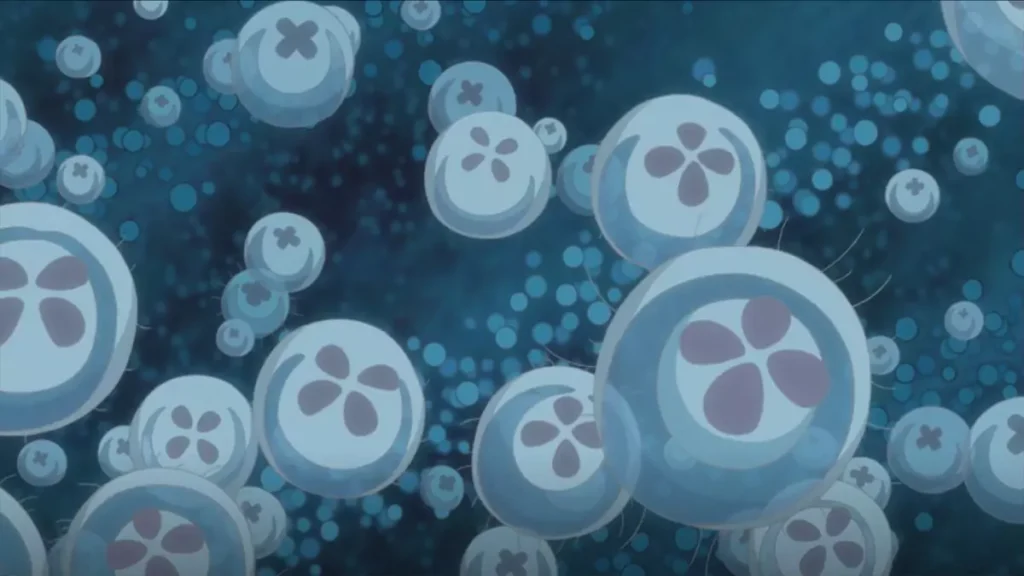
The Art of the Ordinary
One of the most remarkable things about Ponyo is how it makes ordinary moments feel magical. Studio Ghibli has a knack for this, but Ponyo takes it to heart. The ocean waves, the cozy house by the cliff, the simple joy of a child finding a friend—all these scenes feel enchanted, even though they’re grounded in reality. Ghibli’s attention to detail isn’t about dazzling us with fantasy; it’s about showing us the beauty that exists in the world as it is. By elevating these small, seemingly mundane moments, Ponyo reminds us that magic doesn’t need to be grand or otherworldly. Sometimes, it’s right in front of us.
Borrowing from Japanese Shinto Beliefs
The influence of Japanese Shinto beliefs, especially animism, is woven into the fabric of Ponyo. In Shinto, every part of nature has a spirit, a presence. The rocks, trees, rivers, and, of course, the ocean are all alive. This isn’t just a background belief; it shapes the entire world of Ponyo. The ocean in Ponyo isn’t a backdrop; it’s a character with moods, emotions, and reactions. This connection to animism breathes life into the film, making the natural world feel vibrant and sacred. Ponyo invites us to see nature not as a resource but as a companion. It’s a refreshing worldview, urging us to treat the world around us with respect and reverence.
A Global Tradition of Magical Realism
While Ponyo is deeply Japanese, it also taps into a global tradition of magical realism. From Latin American literature to German art, magical realism has always been about blending the real with the fantastic in a way that feels natural. Ponyo takes this tradition and makes it its own, presenting a world where magic is woven into the everyday. There’s no separation between the magical and the mundane; they coexist naturally. This is a hallmark of magical realism, and Ponyo does it beautifully. The film doesn’t ask us to suspend our disbelief; it invites us to expand our understanding of what’s possible.
Ponyo’s magic isn’t flashy; it’s subtle, grounded, and incredibly human. It’s a blend of cultural influences and artistic vision that makes us see our own world with fresh eyes. And maybe that’s the real magic—its ability to remind us of the wonder in the world around us, if only we’re willing to look for it.
Environmental Lessons Wrapped in Wonder – A Story to Protect What We Love
What Ponyo does so well and so subtly is deliver an environmental message wrapped in wonder and beauty. Unlike many movies with a message, it doesn’t stand on a soapbox or tell us what to think. It’s a gentle nudge, a quiet whisper, that maybe we should pay attention to the world around us—not because it’s in trouble, but because it’s beautiful. It’s this approach that makes Ponyo more impactful. We don’t feel lectured; we feel invited to care.

Subtle Yet Powerful
Ponyo never shouts, “Save the planet!” Instead, it shows us a world where nature’s magic is real, a living, breathing part of life. When the ocean spills its magic across the land, it’s mesmerizing—but also chaotic and, yes, a bit frightening. Fujimoto, the reluctant protector of the sea, speaks of imbalance and pollution, but not with anger or bitterness. His frustration is almost weary, as though he’s watched this imbalance grow over time. There’s no finger-wagging here, no guilt trip. Instead, Ponyo leads by example, showing us a world we want to protect not out of obligation but out of love.
The Magic of the Mundane
In Ponyo, the world doesn’t need to be altered to be magical; it already is. The movie invites us to see that magic is everywhere, even in the everyday. The ocean, with its shimmering waves and fantastical creatures, isn’t an exotic escape; it’s part of our reality. The film’s power lies in its ability to take ordinary things—a storm, a fish, a town by the sea—and reveal them as extraordinary. It’s a reminder that we don’t need to change the world to make it worth saving. What we have is already miraculous, if we just take a moment to look. Ponyo shows us that the magic isn’t something we need to add to the world; it’s something we need to notice.
What We Take Away
By the end of Ponyo, we’re left with something rare: a sense of hope, a feeling that maybe, just maybe, we can make a difference. The film doesn’t end with grand resolutions or fixed problems. Instead, it leaves us with an understanding that our world is fragile and precious and that it’s worth protecting. We’re not told what to do; we’re simply reminded that what we love, we naturally want to care for. And maybe that’s the most powerful message of all.
Ponyo doesn’t leave us feeling pressured to change; it inspires us to care. We walk away wanting to protect the beauty we’ve seen, not because it’s required, but because it’s right. The world Ponyo shows us is flawed and messy, yet undeniably magical. And in seeing it that way, we’re reminded that our own world is worth cherishing too.
Conclusion – Why Ponyo Matters
What if we chose to see the magic in our world the way Ponyo does? This isn’t just a question; it’s an invitation. Ponyo offers us a way to view life that’s gentler, more open, and deeply connected to the natural world. It’s a vision that doesn’t separate magic from reality, because to Ponyo, they’re one and the same. And maybe they should be for us too.
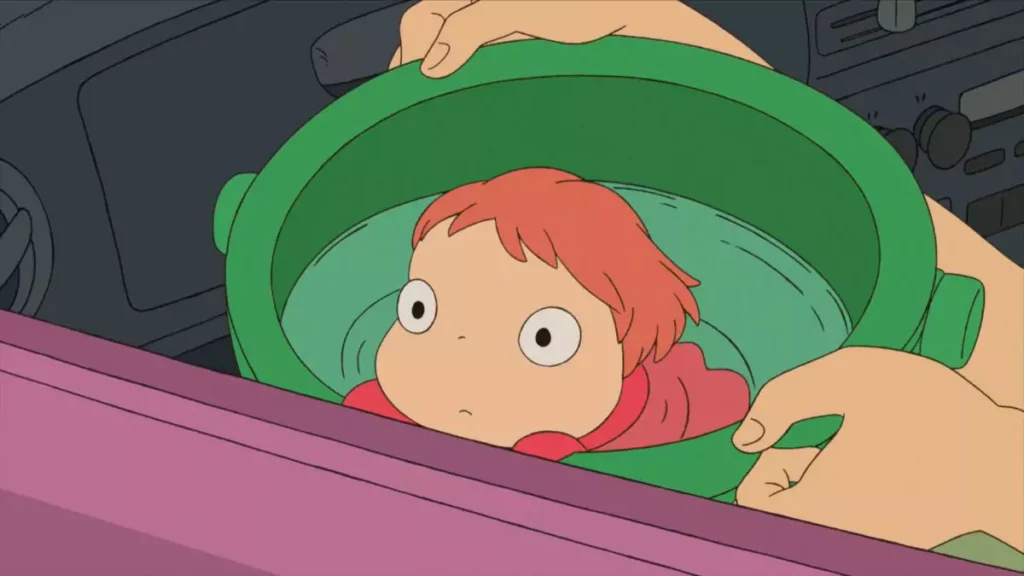
A Call to Action That’s Gentle but Clear
The brilliance of Ponyo is that it inspires us to care without ever telling us to. It doesn’t push; it pulls. It gently guides us to a place where we want to protect our world, not because of fear or guilt, but because we recognize its beauty. Ponyo doesn’t scold or demand; it simply reminds us that this planet we live on is special. It’s worth cherishing, not out of duty, but out of love. There’s no grand speech, no dramatic call to arms. Just a quiet, powerful message: the world is beautiful. Let’s keep it that way.
A Lasting Impact
When we leave Ponyo, we carry something with us. It’s a sense of wonder, a quiet nudge that maybe we could look at our lives a bit differently. Ponyo reminds us that our world—flawed, real, and magical—is worth protecting. It’s a movie that lingers, that plants a seed of responsibility not out of burden, but out of appreciation. Ponyo gives us back a bit of childlike wonder, the kind that believes in magic and wants to protect it. It’s a gentle impact, but it lasts.
Why Ponyo Matters
In a world that often feels jaded, Ponyo stands out. It’s a reminder that magic is real, if we’re willing to see it. It’s not somewhere else, in a far-off land or a mythical realm; it’s here, in the ocean, in the trees, in the lives we lead. Ponyo matters because it’s more than a movie. It’s a way of seeing. A way of being. It asks us to look at the world with fresh eyes, to notice the beauty in the things we usually overlook, and to remember that this magic is fragile.
What if we saw our world the way Ponyo does? Not as a resource to be used, but as a place to be loved. Not as something that needs fixing, but as something that deserves respect. Ponyo gives us a gift—the reminder that we are surrounded by wonder. And maybe, just maybe, that’s reason enough to take care of it.
